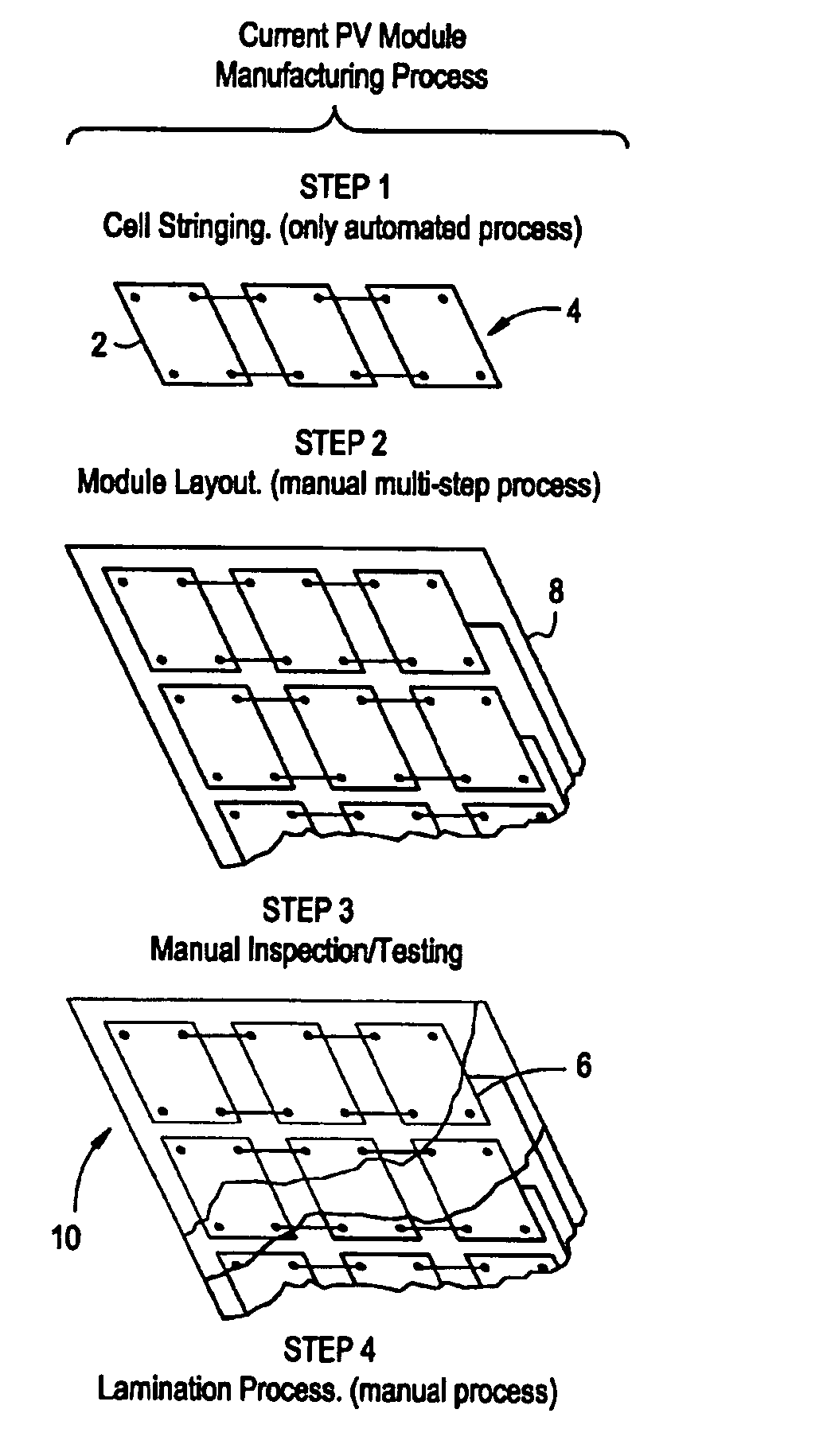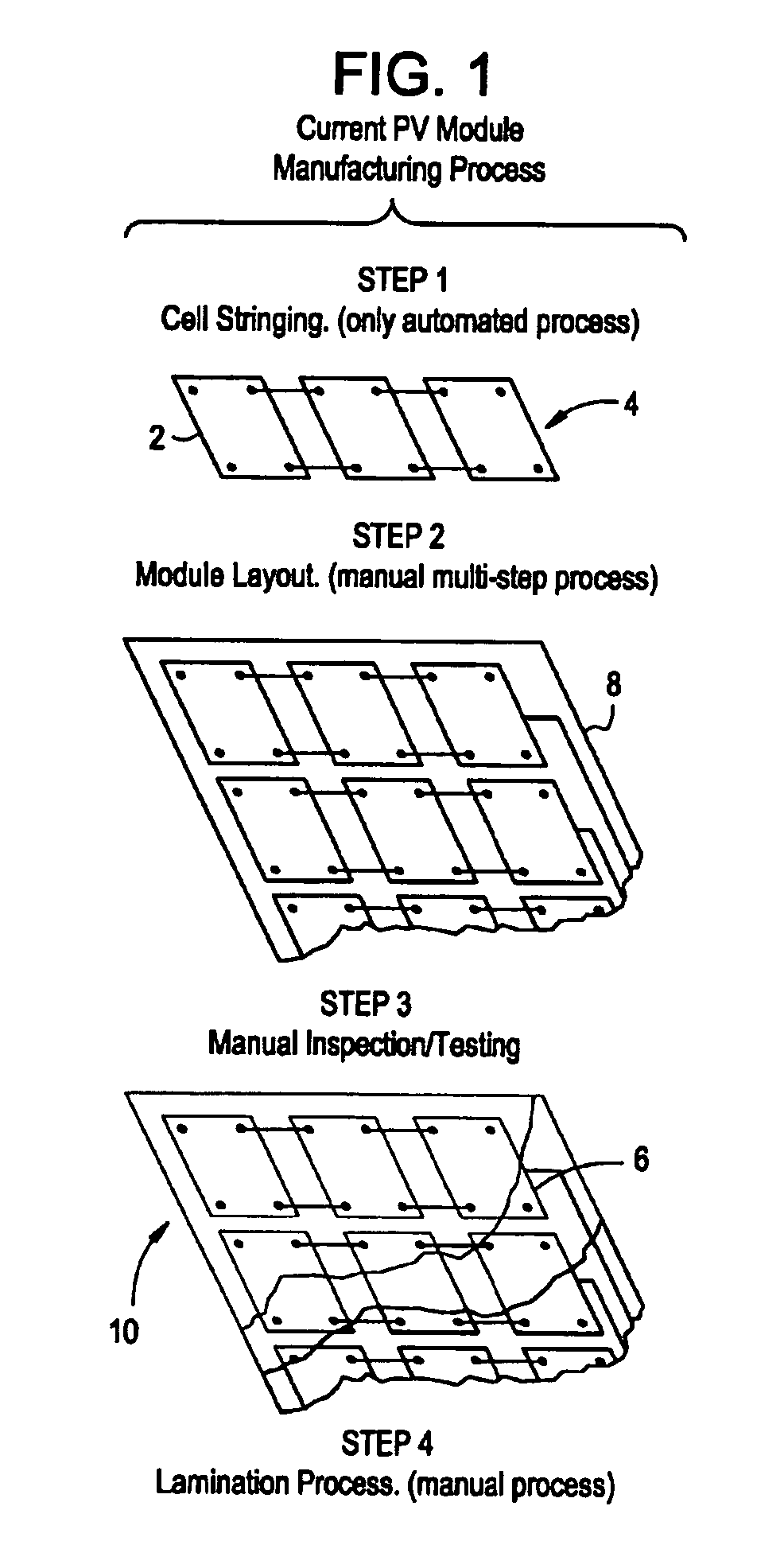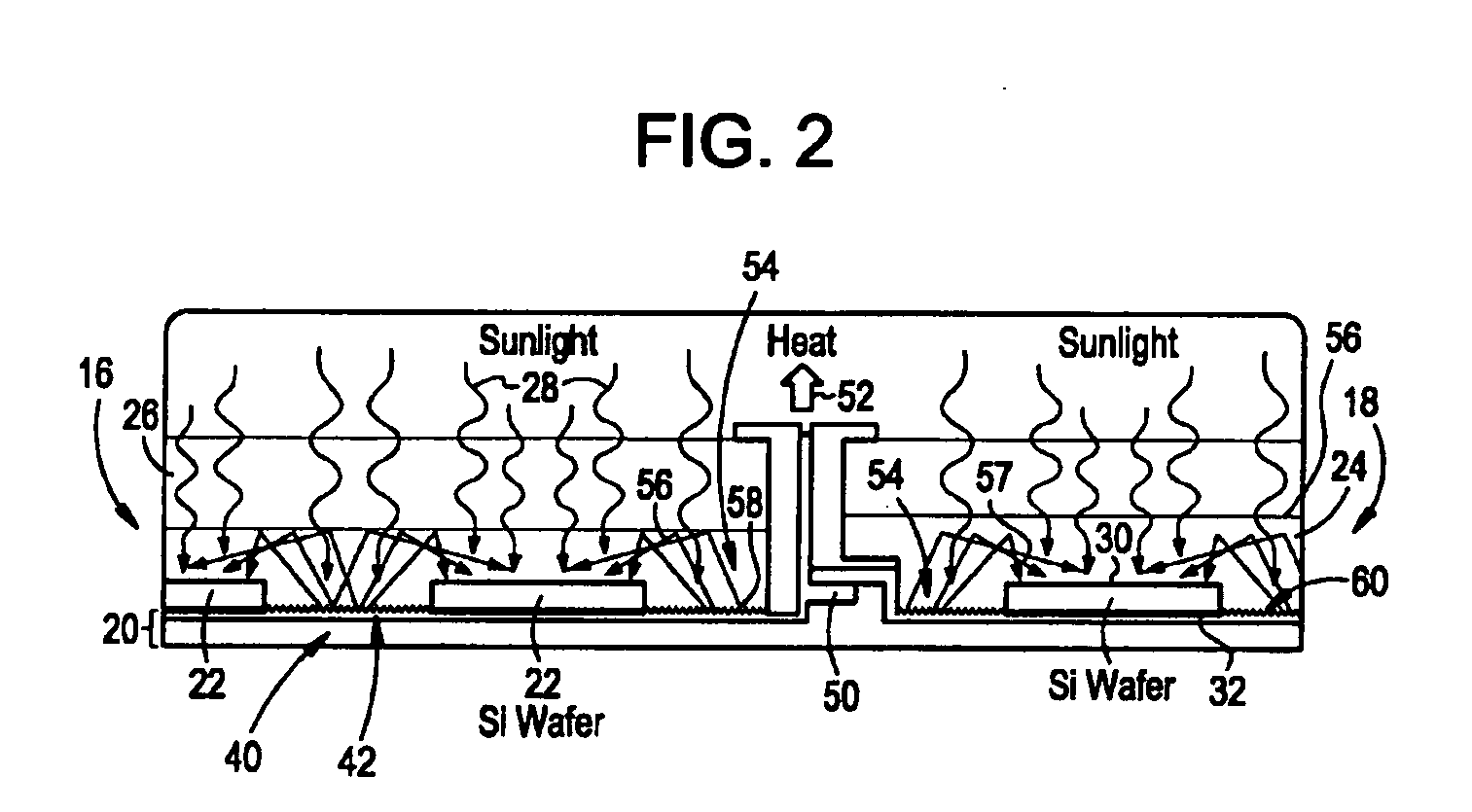PV laminate backplane with optical concentrator
- Summary
- Abstract
- Description
- Claims
- Application Information
AI Technical Summary
Benefits of technology
Problems solved by technology
Method used
Image
Examples
Embodiment Construction
[0014] Referring to FIG. 1, a conventional procedure for fabrication of a photovoltaic module is illustrated. The procedure varies very little across the PV industry and has remained fundamentally the same for the past 15-20 years. Individual solar cells 2 (independent of the technology) are electrically interconnected into a series string 4 using a tabbing structure at step 1. Solder tabs (not shown) are applied to the individual cells 2 manually or using an automated tabbing machine or stringing machine. The string 4 is the building block of a PV laminate. The stringing process at step 1 involves physical handling of cells 2 which often results in cell breakage requiring manual repair. The strings are typically manually moved to a layup station where multiple strings are arranged onto a top glass 6 (see step 4) that is covered with a plastic sheet (not shown) that will serve as an encapsulating layer at step 2. This is usually a manual operation although some vendors have automate...
PUM
 Login to View More
Login to View More Abstract
Description
Claims
Application Information
 Login to View More
Login to View More - Generate Ideas
- Intellectual Property
- Life Sciences
- Materials
- Tech Scout
- Unparalleled Data Quality
- Higher Quality Content
- 60% Fewer Hallucinations
Browse by: Latest US Patents, China's latest patents, Technical Efficacy Thesaurus, Application Domain, Technology Topic, Popular Technical Reports.
© 2025 PatSnap. All rights reserved.Legal|Privacy policy|Modern Slavery Act Transparency Statement|Sitemap|About US| Contact US: help@patsnap.com



